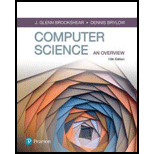
Concept explainers
a.
Explanation of Solution
Whether the statement "One obnoxious person can spoil the party for everyone" involves Pareto principle or not?
Pareto principle:
The Pareto principle states that the 80 percent of the output from the given system depends on the 20 percent of the input given to that system...
b.
Explanation of Solution
Whether the statement "Each radio station concentrates on a particular format such as hard rock music, classical music or talk." involves Pareto principle or not?
Pareto principle:
The Pareto principle states that the 80 percent of the output from the given system depends on the 20 percent of the input given to that system. This means that result will be more accurate when the input is applied with more efforts...
c.
Explanation of Solution
Whether the statement "In an election, candidates are wise to focus their campaigns on the segment of the electorate that has voted in the past." involves Pareto principle or not?
Pareto principle:
The Pareto principle states that the 80 percent of the output from the give...
Want to see the full answer?
Check out a sample textbook solution
Chapter 7 Solutions
Computer Science: An Overview (13th Edition) (What's New in Computer Science)
- Please solve and answer the questions correctly please. Thank you!!arrow_forwardConsidering the TM example of binary sum ( see attached)do the step-by-step of execution for the binary numbers 1101 and 11. Feel free to use the Formal Language Editor Tool to execute it; Write it down the current state of the tape (including the head position) and indicate the current state of the TM at each step.arrow_forwardI need help on inculding additonal code where I can can do the opposite code of MatLab, where the function of t that I enter becomes the result of F(t), in other words, turning the time-domain f(t) into the frequency-domain function F(s):arrow_forward
 Operations Research : Applications and AlgorithmsComputer ScienceISBN:9780534380588Author:Wayne L. WinstonPublisher:Brooks ColeProgramming Logic & Design ComprehensiveComputer ScienceISBN:9781337669405Author:FARRELLPublisher:Cengage
Operations Research : Applications and AlgorithmsComputer ScienceISBN:9780534380588Author:Wayne L. WinstonPublisher:Brooks ColeProgramming Logic & Design ComprehensiveComputer ScienceISBN:9781337669405Author:FARRELLPublisher:Cengage C++ Programming: From Problem Analysis to Program...Computer ScienceISBN:9781337102087Author:D. S. MalikPublisher:Cengage Learning
C++ Programming: From Problem Analysis to Program...Computer ScienceISBN:9781337102087Author:D. S. MalikPublisher:Cengage Learning C++ for Engineers and ScientistsComputer ScienceISBN:9781133187844Author:Bronson, Gary J.Publisher:Course Technology Ptr
C++ for Engineers and ScientistsComputer ScienceISBN:9781133187844Author:Bronson, Gary J.Publisher:Course Technology Ptr Fundamentals of Information SystemsComputer ScienceISBN:9781337097536Author:Ralph Stair, George ReynoldsPublisher:Cengage Learning
Fundamentals of Information SystemsComputer ScienceISBN:9781337097536Author:Ralph Stair, George ReynoldsPublisher:Cengage Learning Fundamentals of Information SystemsComputer ScienceISBN:9781305082168Author:Ralph Stair, George ReynoldsPublisher:Cengage Learning
Fundamentals of Information SystemsComputer ScienceISBN:9781305082168Author:Ralph Stair, George ReynoldsPublisher:Cengage Learning





